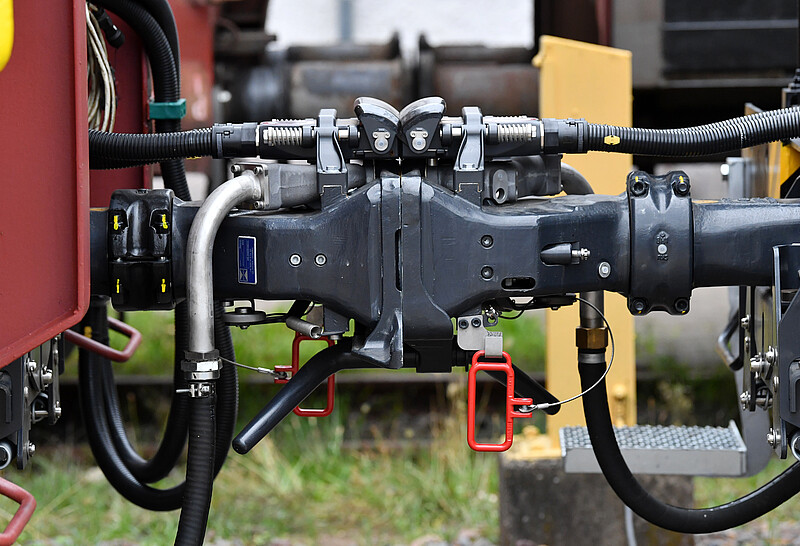Digital Automatic Coupling (DAC)
Digital Automatic Coupling (DAC) is a key technology for automation and digitalisation in rail freight transport.

the composition of goods trains.
© Deutsche Bahn AG/Oliver Lang
Despite the technological advantages of an Automatic Coupling (AC), attempts to introduce it in Europe have already failed twice in the past. The main reasons were the lack of a European consensus for retrofitting and the high investment requirements. This makes Europe the only continent where Automatic Coupling is not used to any significant extent.
After the failed attempts to introduce the Automatic Coupling (AC) in the 1970s and the Z-AC in the 1990s, intensive efforts are currently being made to replace the screw coupling system with a Digital Automatic Coupling (DAC). Through this system improvement, a modal shift from road to rail with favourable climate effects is intended. The term "digital" is intended to indicate the transmission of data and energy through the coupling as well as the enabler function of the AK to be played for the digitalisation and automation of railway processes along the train.
The coupling for freight wagons is not thought of alone, but combined with other functions. The term DAC type 4 is used for a coupling system that fulfils the following functionalities:
- automatic, mechanical coupling
- automatic coupling of the air line
- automatic coupling of the power line
- automatic coupling of the data bus line
If, in addition, the uncoupling process can also be made possible automatically (and remotely controlled), this is referred to as DAC type 5.
At DB Cargo, great hopes are being placed in the conversion of single wagons to the Digital Automatic Coupling. With this centre buffer coupling, an electrical and a data line are to be coupled at the same time. The electric coupling supplies the wagon with power for the electro-pneumatic brake (ep-brake) and for the uncoupling and coupling process. The data line transmits the wagon data to the locomotive driver. This eliminates the need for manual uncoupling and coupling, and simplifies and speeds up the handling of wagons in marshalling yards and loading points. During the automatic brake test before the departure of a train, the proper functioning of each individual brake is displayed to the train driver on his driver's console.
The total cost of an EU-wide migration of a DAC is estimated at 4.7 to 6.2 billion euros. Taking into account the costs for the installation of automation components in the freight wagons, the total costs amount to approx. 6.4 to 8.6 billion euros.
Recommended specialist literature:
Jänsch, Eberhard; Lang, Hans Peter; Nießen, Nils (Hrsg.), Handbuch Das System Bahn
https://www.pmcmedia.com/neuerscheinungen/427/handbuch-das-system-bahn?c=10
